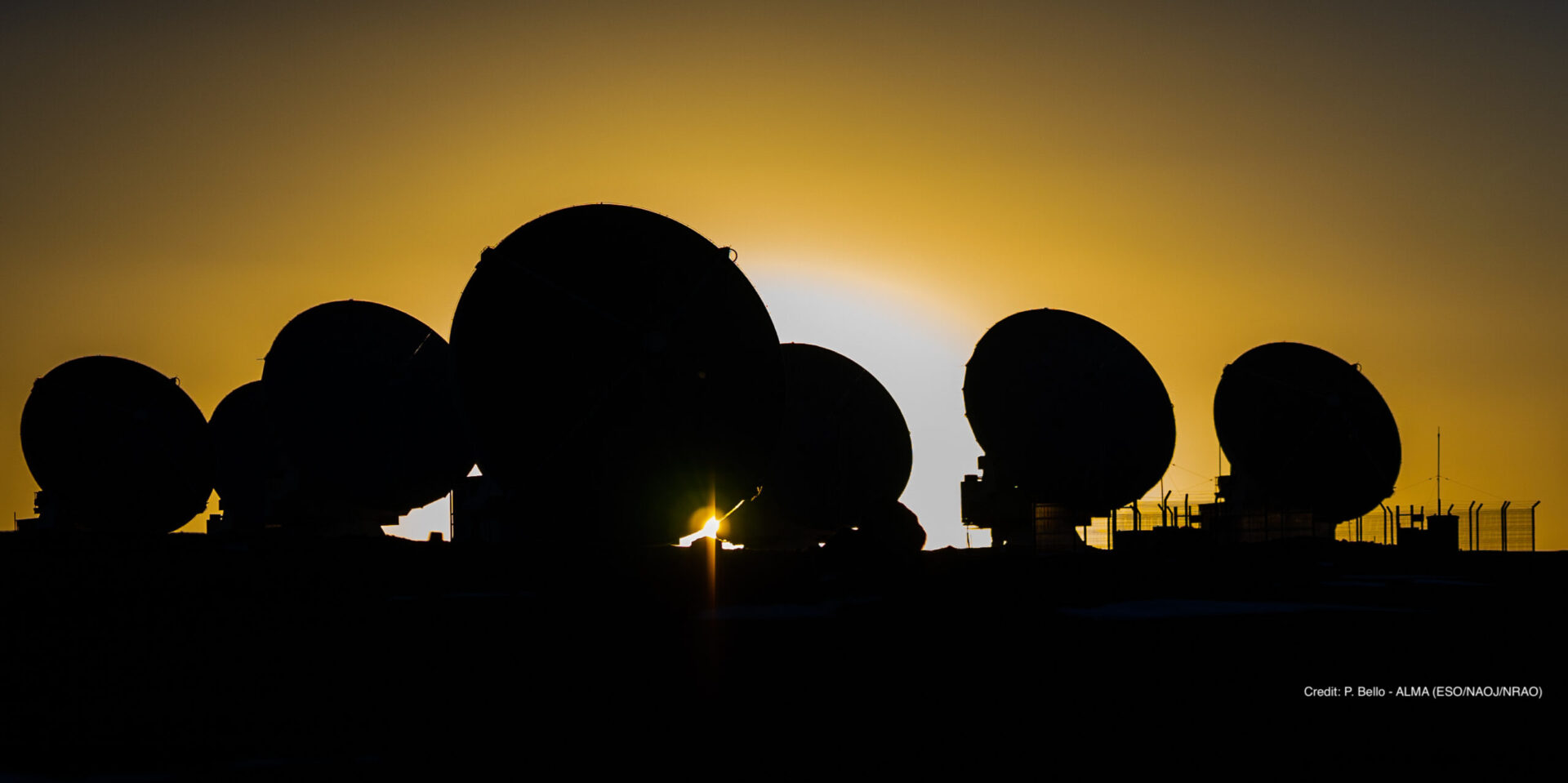ALMA Cycle 10 Call for Proposals to Open April-May 2023
A Call for Proposals (CfP) with detailed information on Cycle 10 is anticipated to be issued in April 2023, and the deadline for proposal submission will be in May 2023. The purpose of this pre-announcement is to highlight aspects of the CfP to assist with early planning. ALMA Cycle 10 will start in October 2023. In the main 12-m Array, antenna configurations C-1 to C-8 (with maximum baselines between 0.16 and 8.5 km) will be offered. The number of hours to be available for approved science observations will be announced in the CfP. Projects with observations in the highest-frequency Bands 8, 9, and 10 are strongly encouraged. Proposers are encouraged to submit ACA stand-alone observations for targets that can be observed in the LST range of 20h to 10h.
The key dates (anticipated) for Cycle 10 are:
- 12 April 2023: Release of the ALMA Cycle 10 CfP and Observing Tool, and opening of the archive for proposal submission.
- 10 May 2023: Proposal submission deadline.
- August 2023: Results of the proposal review sent to proposers.
- 1 October 2023: Anticipated start of Cycle 10 observations.
The proposal types in Cycle 10 will be the same as those in Cycle 9. Principal Investigators submitting a proposal to ALMA for Very Long Baseline Interferometry (VLBI) observations in ALMA Bands 1 or 3 made in concert with the Global mm-VLBI Array (GMVA) at 7mm and 3 mm must also submit a proposal to the GMVA by its 1 February 2023 deadline.
New in Cycle 10
The following technical capabilities will be available this Cycle for the first time:
- Band 1 on the 12-m Array and for Stokes I only (no Stokes Q/U/V), anticipated to be available from March 2024
- Spectral scans that include Total Power observations
- 4×4-bit spectral modes for improved sensitivity on the 12-m Array (dual polarization)
- Solar observations in full polarization in Band 3 using only the 12-m Array
- Phased array mode in Bands 1, 3, 6 and 7 (the total time available for this mode is expected to be capped at approximately 50 hours)
- VLBI in Bands 1, 3, 6 and 7, including flexible tuning for spectral lines
New in Cycle 10 will be the availability of Joint Proposals with other facilities, including the Space Telescope Science Institute’s James Webb Space Telescope, the National Radio Astronomy Observatory’s Karl G. Jansky Very Large Array, and the European Southern Observatory’s Very Large Telescope.
Also new this Cycle, Band-to-band phase calibration will be available for high frequency observations on both the 7-m Array and all 12-m Array configurations. The total time available for projects needing band-to-band phase calibration is expected to be capped.
The Proposal Review Process
- All proposals requesting fewer than 50 hours on the 12-m Array, and ACA stand-alone proposals requesting fewer than 150 hours on the 7-m Array will be reviewed through the distributed peer review system.
- Large Programs will be reviewed by a panel of experts.
- All Cycle 10 proposals will be reviewed through a dual-anonymous procedure.
More information can be found in the ALMA Science portal.
